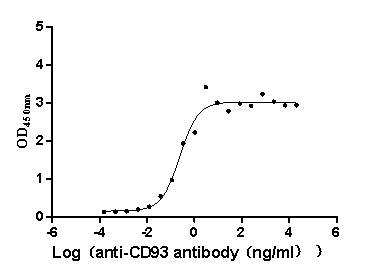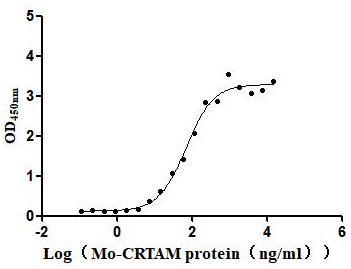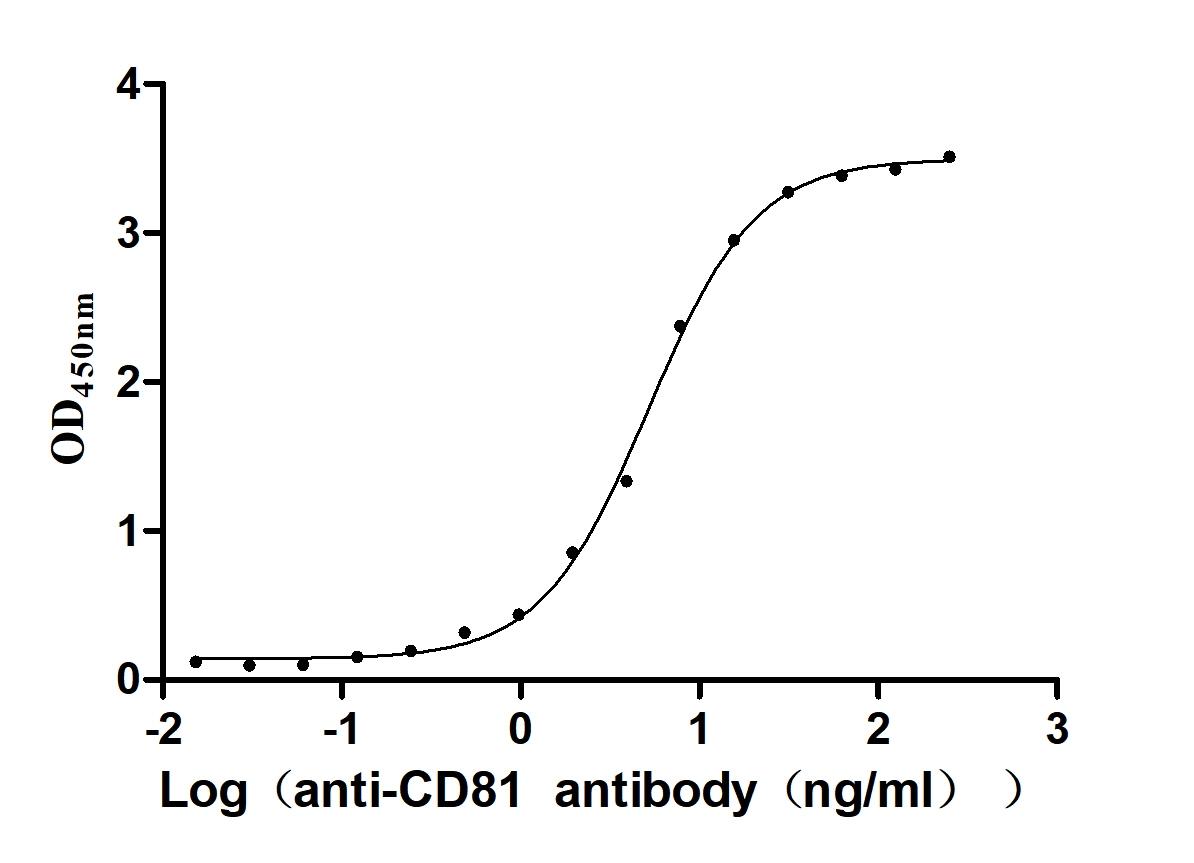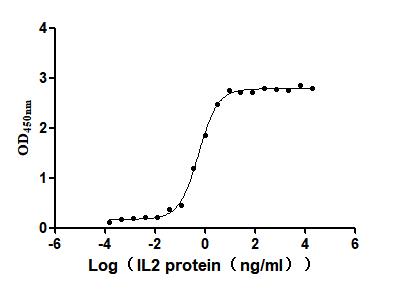Recombinant Human Beta-synuclein (SNCB)
In Stock-
中文名稱:人SNCB重組蛋白
-
貨號:CSB-EP624090HUb1
-
規格:¥1536
-
圖片:
-
其他:
產品詳情
-
純度:Greater than 85% as determined by SDS-PAGE.
-
基因名:SNCB
-
Uniprot No.:
-
種屬:Homo sapiens (Human)
-
蛋白長度:Full Length
-
來源:E.coli
-
分子量:21.7 kDa
-
表達區域:1-134aa
-
氨基酸序列MDVFMKGLSMAKEGVVAAAEKTKQGVTEAAEKTKEGVLYVGSKTREGVVQGVASVAEKTKEQASHLGGAVFSGAGNIAAATGLVKREEFPTDLKPEEVAQEAAEEPLIEPLMEPEGESYEDPPQEEYQEYEPEA
Note: The complete sequence may include tag sequence, target protein sequence, linker sequence and extra sequence that is translated with the protein sequence for the purpose(s) of secretion, stability, solubility, etc.
If the exact amino acid sequence of this recombinant protein is critical to your application, please explicitly request the full and complete sequence of this protein before ordering. -
蛋白標簽:N-terminal 10xHis-tagged and C-terminal Myc-tagged
-
產品提供形式:Liquid or Lyophilized powder
Note: We will preferentially ship the format that we have in stock, however, if you have any special requirement for the format, please remark your requirement when placing the order, we will prepare according to your demand. -
緩沖液:If the delivery form is liquid, the default storage buffer is Tris/PBS-based buffer, 5%-50% glycerol. If the delivery form is lyophilized powder, the buffer before lyophilization is Tris/PBS-based buffer, 6% Trehalose.
-
復溶:We recommend that this vial be briefly centrifuged prior to opening to bring the contents to the bottom. Please reconstitute protein in deionized sterile water to a concentration of 0.1-1.0 mg/mL.We recommend to add 5-50% of glycerol (final concentration) and aliquot for long-term storage at -20℃/-80℃. Our default final concentration of glycerol is 50%. Customers could use it as reference.
-
儲存條件:Store at -20°C/-80°C upon receipt, aliquoting is necessary for mutiple use. Avoid repeated freeze-thaw cycles.
-
保質期:The shelf life is related to many factors, storage state, buffer ingredients, storage temperature and the stability of the protein itself.
Generally, the shelf life of liquid form is 6 months at -20°C/-80°C. The shelf life of lyophilized form is 12 months at -20°C/-80°C. -
貨期:3-7 business days
-
注意事項:Repeated freezing and thawing is not recommended. Store working aliquots at 4°C for up to one week.
-
Datasheet & COA:Please contact us to get it.
相關產品
靶點詳情
-
功能:Non-amyloid component of senile plaques found in Alzheimer disease. Could act as a regulator of SNCA aggregation process. Protects neurons from staurosporine and 6-hydroxy dopamine (6OHDA)-stimulated caspase activation in a p53/TP53-dependent manner. Contributes to restore the SNCA anti-apoptotic function abolished by 6OHDA. Not found in the Lewy bodies associated with Parkinson disease.
-
基因功能參考文獻:
- Cells that overexpress alpha-syn showed increased susceptibility to the toxicity of the oligomers, while those that overexpressed beta-syn showed increased resistance to the toxic oligomers. PMID: 29054856
- alterations in the plasma alpha-synuclein and beta-synuclein levels might be implicated in the association between synaptic abnormalities and autism spectrum disorder pathogenesis. PMID: 29850516
- Study suggests that beta-synuclein changes in Dementia with Lewy bodies may exacerbate neuronal dysfunction caused by accumulation of alpha-synuclein by influencing protein degradation. PMID: 29278715
- Data suggest that pH serves as an on/off switch for beta- synuclein to form aggregates/fibrils (as seem in Parkinson disease); hydrogen bonding between glutamate residues appears to be involved in fibril formation. PMID: 28710275
- Cellular pathways affected by bSyn are similar to those affected by aSyn, including impairment of vesicular trafficking and induction of oxidative stress. PMID: 26586132
- loss of inhibitory C-terminal conformations in disease associated P123H beta-synuclein PMID: 26332674
- beta-Synuclein expression was locally concentrated and rather modest, but nevertheless changed its effect on amyloid precursor protein expression and plaque load in a time- and concentration-dependent manner. PMID: 26111745
- The differing aggregation propensities of alpha-synuclein and beta-synuclein are associated with differences in the degree of residual structure in the C-terminus coupled to the shorter separation between the N- and C-termini in beta-synuclein. PMID: 25389903
- Beta-synuclein protects against isoaspartate accumulation in alpha-synuclein. PMID: 23630590
- both alphaS- and P123H betaS-globules were formed through similar but distinct pathogenic mechanisms. PMID: 23013868
- In vivo cross-linking reveals principally oligomeric forms of alpha-synuclein and beta-synuclein in neurons and non-neural cells PMID: 23319586
- Thermodynamic studies in conjunction with EPR confirm that alpha-synuclein, beta-synuclein, and gamma-synuclein bind copper(II) in a high affinity 1:1 stoichiometry. PMID: 21117662
- Data provide evidence for the role of beta-synuclein minor transcript variants in the development of complex diseases and provide new insights into the pathogenesis of Lewy body diseases. PMID: 22205345
- This study suggested that the pathogenesis of dementia in Parkinson disease, indicating that differential sncb expression in the caudate nucleus may represent one of the molecular mechanisms involved in these complex diseases. PMID: 21683963
- Despite both synucleins sharing considerable sequence homology, the level of carboxy-terminal Src kinase-homologous kinase (CHK) phosphorylation of beta-synuclein is significantly higher than that of alpha-synuclein. PMID: 21699177
- Transcriptional regulation of the beta-synuclein 5'-promoter metal response element by metal transcription factor-1. PMID: 21386983
- Synuclein-alpha, -beta, and -gamma are important in regulating neurotransmitter release from specific populations of midbrain dopamine neurons through mechanisms that differ from those reported in other neurons. PMID: 21593311
- Studies identified molecular interaction domains within the beta-synuclein polypeptide that specifically binds alpha-synuclein. PMID: 21085664
- beta-Synuclein mRNA expression in the control group was significantly higher than that in the schizophrenic group. PMID: 20854101
- A drastic diminution of beta-synuclein expression was observed in cortical areas of all samples that presented neuropathological features corresponding to pure diffuse Lewy body pathology PMID: 20959308
- Human beta-synuclein rendered fibrillogenic by designed mutations. PMID: 20833719
- Data show that alpha-synuclein, beta-synuclein, and apolipoprotein A-1 have the conserved functional ability to induce membrane curvature and to convert large vesicles into highly curved membrane tubules and vesicles. PMID: 20693280
- members of the synuclein gene family, particularly SNCA and SNCG, affect the risk of developing diffuse lewy body disease. PMID: 20697047
- Gamma-synuclein protein is valuable for evaluation of progression of colorectal carcinoma; it is more sensitive to predict advanced stage and lymph node invasion when combined with either alpha- or beta-synuclein protein. PMID: 20043104
- Biophysical properties of the synucleins and their propensities to fibrillate: inhibition of alpha-synuclein assembly by beta- and gamma-synucleins PMID: 11812782
- Of medulloblastomas, 76% have immunoreactivity for either alpha- or beta-synuclein or both; no immunoreactivity for gamma-synuclein is seen in medulloblastomas. PMID: 12783249
- Beta-synuclein displays an antiapoptotic p53-dependent phenotype and protects neurons from 6-hydroxydopamine-induced caspase 3 activation: cross-talk with alpha-synuclein and implication for Parkinson's disease. PMID: 12867415
- 2 new AA changes were found in unrelated Lewy body dementia index cases: V70M & P123H, at conserved residues in highly conserved regions of the beta-synuclein protein. Mutations in the beta-synuclein gene may predispose to DLB. PMID: 15365127
- the alpha- and gamma-synucleins regulate proteasomal function and beta-synuclein acts as a negative regulator of alpha-synuclein PMID: 15591046
- An 11-residue deletion in the lipid-binding domain of beta-synuclein leads to the destabilization of an entire segment of the micelle-bound helical structure containing the deletion site. PMID: 16597821
- findings indicate that increased expression of beta-synuclein protein results in a reduction of alpha-synuclein protein expression PMID: 16959793
- The accumulation of beta-synuclein was detectable only in the pons of Sandhoff disease cases. This differential accumulation of alpha- and beta-synucleins in human lipidoses may be related to functional differences between these two proteins. PMID: 17653558
- A comparison of the structural and dynamic properties of the free states of all three synucleins, is reported in order to shed light on differences that may help to explain their different propensities to aggregate. PMID: 17681534
- Our data confirm the fatty acid binding properties of alpha-syn, and to a lesser extent beta-syn, but suggest that gamma-syn does not share this same characteristic. PMID: 17692832
- structural and functional properties of beta-synuclein were characterized using biochemical and bio-physical methods including: a functional assay, mass spectrometry, size exclusion chromatography, circular dichroism (CD), and fluorescence spectroscopy PMID: 18221001
- The aggregation behavior of alpha- and beta-synuclein as well as a series of chimeric variants were compared by exploring the structural transitions that occur in the presence of a widely used lipid mimetic, sodium dodecyl sulfate (SDS). PMID: 18436957
顯示更多
收起更多
-
亞細胞定位:Cytoplasm.
-
蛋白家族:Synuclein family
-
組織特異性:Expressed predominantly in brain; concentrated in presynaptic nerve terminals.
-
數據庫鏈接:
Most popular with customers
-
Recombinant Human Tyrosine-protein kinase Mer (MERTK), partial (Active)
Express system: Mammalian cell
Species: Homo sapiens (Human)
-
Recombinant Human C5a anaphylatoxin chemotactic receptor 1 (C5AR1)-VLPs (Active)
Express system: Mammalian cell
Species: Homo sapiens (Human)
-
Recombinant Human Somatostatin receptor type 2 (SSTR2)-VLPs (Active)
Express system: Mammalian cell
Species: Homo sapiens (Human)
-
Recombinant Mouse Claudin-18.2 (Cldn18.2)-VLPs (Active)
Express system: Mammalian cell
Species: Mus musculus (Mouse)
-
Recombinant Macaca fascicularis CD93 molecule (CD93), partial (Active)
Express system: Mammalian cell
Species: Macaca fascicularis (Crab-eating macaque) (Cynomolgus monkey)
-
Recombinant Mouse Cell adhesion molecule 1 (Cadm1), partial (Active)
Express system: Mammalian cell
Species: Mus musculus (Mouse)
-
Recombinant Human CD81 antigen (CD81), partial (Active)
Express system: Mammalian cell
Species: Homo sapiens (Human)
-
Recombinant Human Interleukin-2 (IL2) (Active)
Express system: Mammalian cell
Species: Homo sapiens (Human)

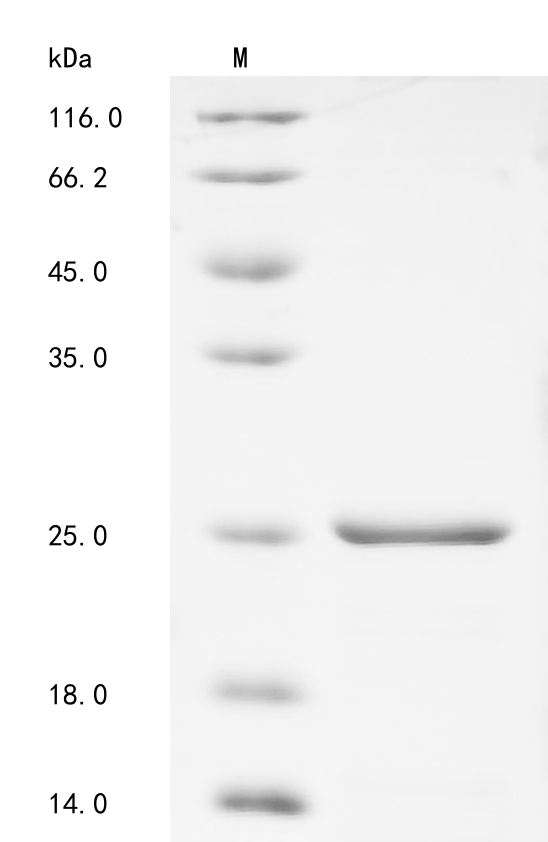

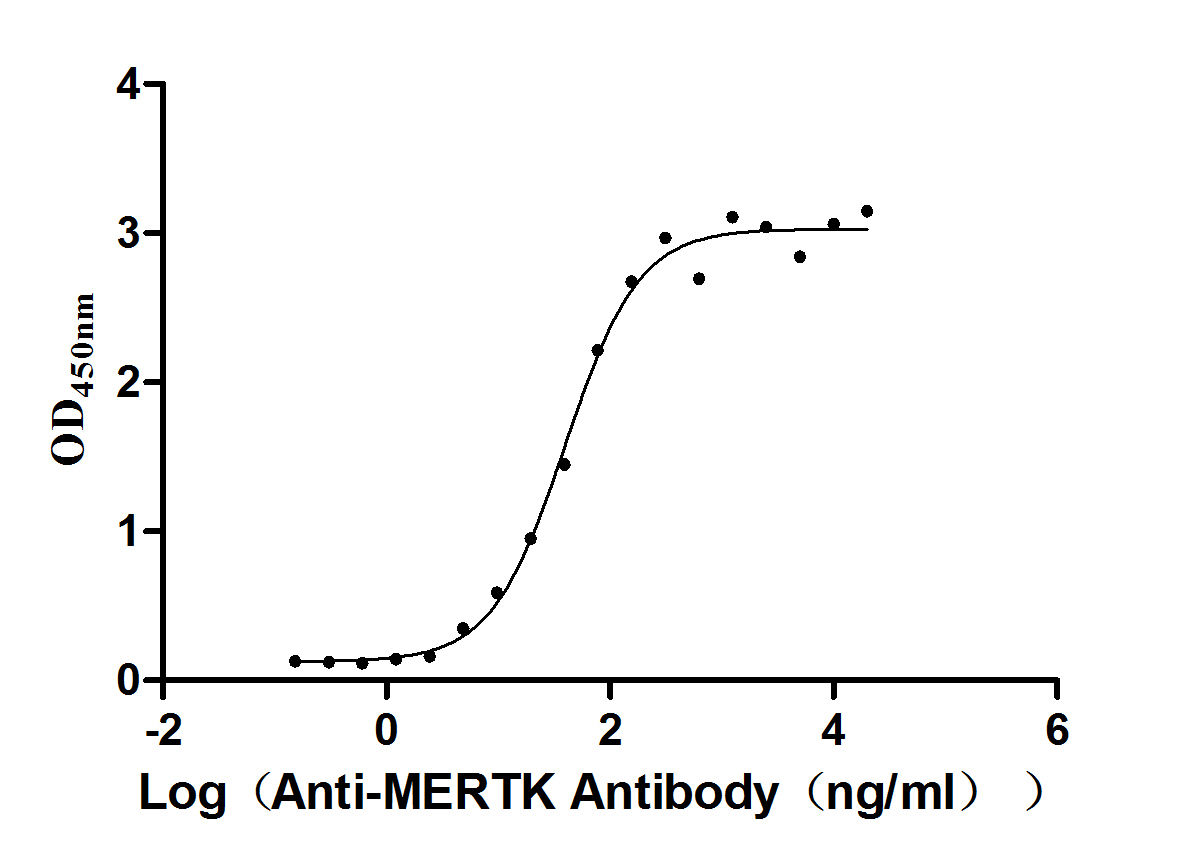
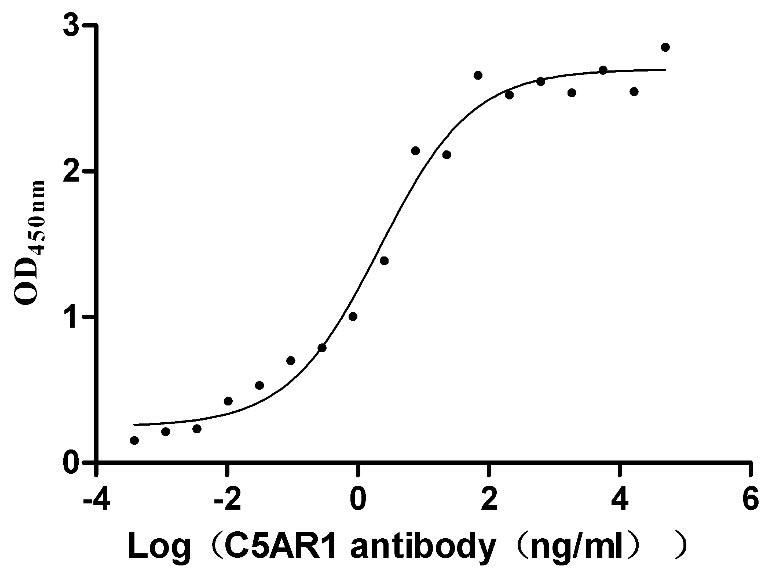
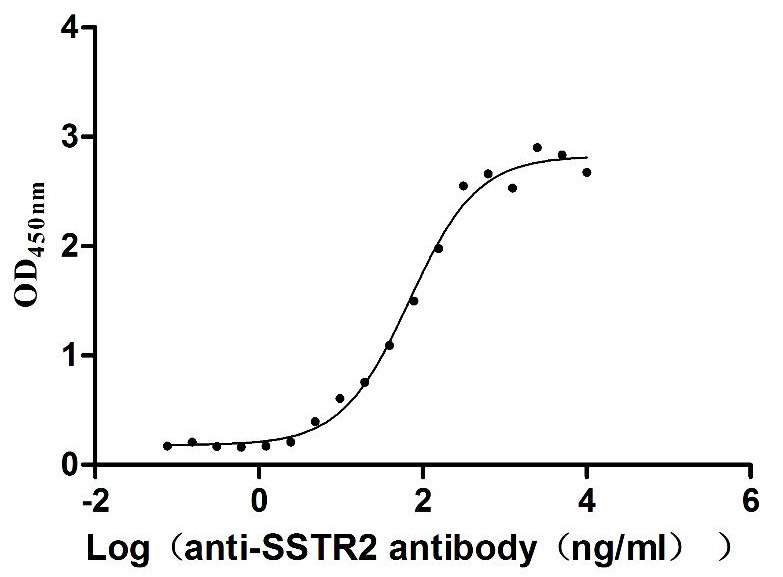
-AC1.jpg)
